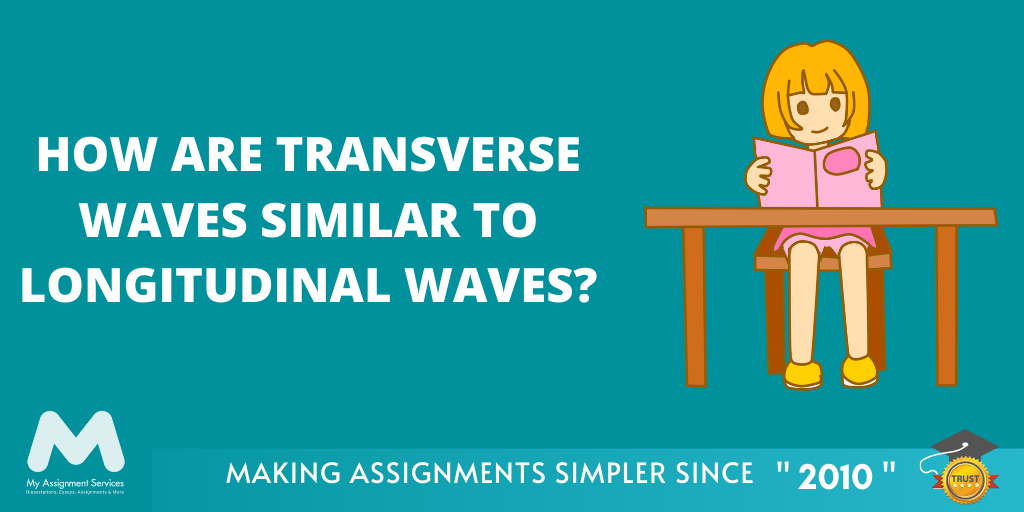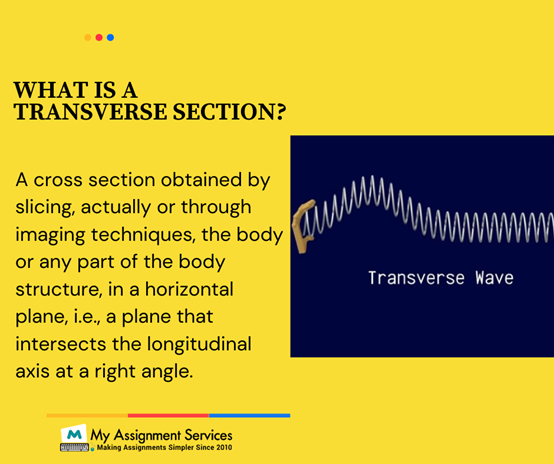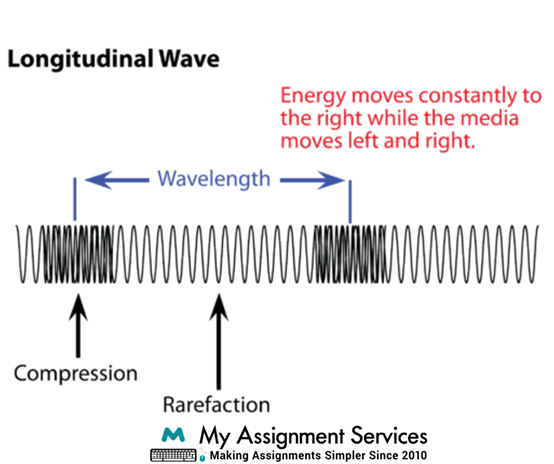
A wave is generated that flows through space and time; energy passes but does not matter from one point to the next. A single pulse or vibration in which the constituent particles oscillate from their original position is called a transverse wave. In contrast, when the direction of motion remains the same at each point in the medium, then it's a longitudinal wave. Wave can be transmitted in a medium or space that occupies. The typical examples for waves are sound waves, water waves, electromagnetic radiation etc. Wave propagation through a medium is high when the wave's phase velocity is high and low when it's low. The frequency at which a wave moves in a particular direction is called its wavelength. The greater the frequency is, the smaller its wavelength. The amplitude of a wave refers to the amount by which a wave vibrates, and it can be found as half of the peak-to-peak measurement.
Transverse and longitudinal waves are two different waves that have opposite characteristics. Transverse waves involve alternating vibrations perpendicular to the direction in which energy is travelling, whereas longitudinal waves involve oscillations parallel with the direction of motion. Here is a quick overview on transverse waves and longitudinal waves.

What Is a Transverse Wave?
A transverse wave is a moving wave with oscillations that occur perpendicular to the energy transfer direction. A light wave is an example of this sort of wave, which is made up of oscillating electric and magnetic fields that are constantly at right angles to each other and to the propagation direction. All electromagnetic waves have properties associated with waves, such as wavelength, frequency, velocity, or period. When sinusoidal, the time-varying voltage or electric field component produces an oscillating magnetic field component and vice versa.
The y-component (the magnetic field) thus propagates perpendicular to the x-direction (the electric field). For circular polarization in an ideal crystal lattice, the electric field component is in the direction of propagation, while oscillating polarizations are in a plane perpendicular to that. Transverse Wave was discovered in 1887 by Christian Doppler when he published his paper on the phenomenon of the apparent change in frequency and wavelength of light as it relates to its source's velocity relative to an observer. In 1895, Lord Kelvin first proposed that gravitational waves exist, although, until 2016, they have never been directly detected. In 1900, Christian Doppler postulated that this was because the Earth's interior is rotating at different rates from the exterior, which would cause compression and rarefaction to occur in a cyclic fashion.
What Is Longitudinal Wave?
A longitudinal wave or compression wave type of wave exists within a solid material, and it moves faster than it would if travelling through a fluid such as air. The molecules in the solid vibrate back and forth parallel to the wave's direction of travel. This type of wave is called a P-wave because of its dependence on pressure (compression). A similar type of wave, called an S-wave, moves through elastic solids due to shear stress. When waves move into materials with different densities, they slow down and speed up at different rates, which can cause refraction. This is especially important when considering seismic waves within the Earth, meteorite impacts in the atmosphere, and microexplosions of supernovae.
Longitudinal waves were first predicted by Lord Kelvin in 1842. In 1900, Christian Doppler postulated that this was because the Earth's interior is rotating at different rates from the exterior, which would cause compression and rarefaction to occur in a cyclic fashion.
Transverse Waves Vs Longitudinal Waves
Transverse waves have oscillations that are perpendicular to the wave's travel direction. Longitudinal waves are those in which the oscillations are parallel to the wave's travel direction. Transverse waves have their electric & magnetic orientation at right angles to one another, whereas longitudinal waves have their electric and magnetic fields directed parallel to each other. The difference between these two types of waves comes from how they interact with the particles through which they propagate. You can think of it this way: if a particular kind of particle seems to fit well within a type of wave, then that's what type of wave it will be. A transverse wave has all its maximums and minimums, or crests and troughs, perpendicular to the direction of propagation. Because of this, transverse waves require a medium through which they can travel. The two most common examples are water waves and light waves.
Learn how to acknowledge any source of information using the APA 7th style.
Download Now
Let's Explore the Similarities Between the Two Wave Types
Medium to travel
The first similarity is that they both require a medium to travel through. In other words, you can't have a wave without some substance where the waves can move through. With this in mind, let's look at some examples of each type of wave and the mediums they use:
Examples of Transverse Waves
Here are some examples of transverse waves:
- Lightwave (movement of light) - travels through space
- Radio wave (movement of radio signals) - travels through air, outer space, or even the vacuum of a container
- Microwave wave (movement inside microwaves)- travels through the air
Examples of Longitudinal Waves
Here are some examples of longitudinal waves:
- Sound wave (movement of sound) - travels through a medium such as air or water.
- Seismic Wave (movement of earthquakes)- moves through a solid medium, such as rock and earth. They also move through the various layers inside the earth, including the mantle and core.
Mechanical or Electromagnetic
Another similarity between these two wave types is that they both can be either mechanical or electromagnetic. Mechanical waves are those that involve the movement of physical objects through a medium, such as ripples on water or waves in an ocean. Electromagnetic waves are those where the energy is transferred by way of magnetic and electrical interactions.
Examples of Mechanical Waves
Here are examples of mechanical waves:
- Ocean wave (movement of water) - physical objects such as rocks and boats can move through the medium (water), which is caused by wind waves hitting them. The energy moves down to the bottom, reflecting back up, causing repetitive motion.
- Surface wave (movement caused by earthquakes) - energy moves through the various layers of the earth. As it reaches the other side, it reflects back up, which causes repetitive motion. This is what causes an earthquake.
Examples of Electromagnetic Waves
Here are examples of electromagnetic waves:
- Lightwave (movement of light) - energy transfers through photons which transfer many different wavelengths of light
- Radio wave (movement of radio signals) - energy transfers through electrons. Since electrons are negatively charged, they move to the positively charged side, transferring energy in the form of radio waves.
- Shockwaves (movement of shockwaves)- electromagnetic waves that move at the speed of light.
All Transverse Waves are Mechanical, and All Longitudinal Waves are Electromagnetic.

Get Help for Writing Your Assignment on Transverse Waves and Longitudinal Waves!
Longitudinal waves are also called compression waves because the peaks of the wave are together. Transverse waves are also known as shear waves because the direction of vibration is perpendicular to the wave's direction. Let us understand this better by taking an example of a guitar string. The guitar strings move back and forth whenever you pluck it; the vibrations are transverse waves. These waves have a direction. If you fix one end of the string and start twanging, these waves will travel in both directions, i.e., towards left as well as right. These two types of Waves are a very common phenomenon that can be observed every day around us, but few people know that there are different types of Waves that exist with different characteristics. In conclusion, there are some differences between them as well as similarities. If you need any help with any concept that falls under transverse or longitudinal waves, get in touch with the experts at My Assignment Services! We would be happy to assist you.
Related Study Materials
Our Experts can answer your Assignment questions instantly.
Ask Question0 Comment
Get It Done! Today
1,212,718Orders
4.9/5Rating
5,063Experts













Loved reading this Blog? Share your valuable thoughts in the comment section.
Add comment